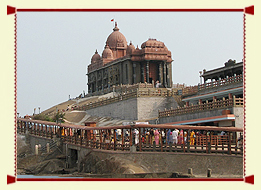
Kanyakumari was as soon as known as the Alexandria in the east. This location continues to be an excellent middle for art, culture, civilization, and pilgrimage for years.
It had been also a famous center for commerce and trade. Throughout the early component with the eighth century Ad Islam entered the southern part of India via the sea route with traders and missionaries.
By means of St. Thomas, one of the twelve Apostles of Christ, Christianity arrived on this region in Ad 52. Islam, Christianity and Jainism have greatly contributed towards the architectural prosperity and literary heritage of this location.
Kanyakumari was also below the management with the Cholas, the Cheras, the Pandyas along with the Nayaks who had been excellent rulers of south India. The architectural splendor with the temples will be the function of these rulers.
Legend has it that Kanya Devi, an avatar of Goddess Parvati, was to wed Lord Shiva, the destroyer within the Hindu trinity. But he did not turn up in the auspicious time along with the wedding never took place. The rice and cereals meant for your marriage remained uncooked.
Even nowadays, one can purchase stones there that look specifically like rice and cereals. Neighborhood people believe that they are the leftovers with the legendary marriage that couldn't be solemnized. As to the princess Kanya Devi, she grew to become a virgin goddess
The Temple :
The primary entrance towards the temple is via the northern gate although the deity is dealing with east. The eastern entrance is stored closed other than on unique occasions once the deity is taken out for ceremonial bath.
3 corridors surround the sanctum. The outer corridor has no special shrines, but after a walk round it the devotees cross the 'Navarathiri mandapam' and a pathway results in the next corridor encircling the shrine. There stands the flag mast or 'Kodisthambam'. From right here you can have a clear watch with the Goddess. A move more ahead will just take you in front in the sanctum.
Primary Festivals and Opening Times :
The primary festivals are held in the Tamil month of Vaikasi (May/June) along with the Navarathri festival in September/October.
The temple is open up towards the public from four.30 AM to 11.45 AM and five.30 PM to 8.45 PM. Male worshippers are necessary to remove their shirts just before getting into the temple.
|